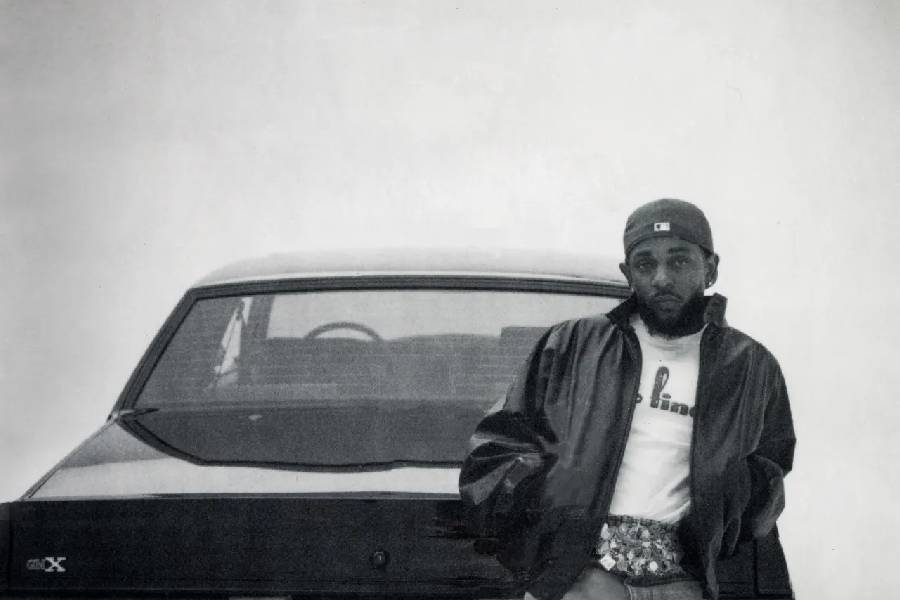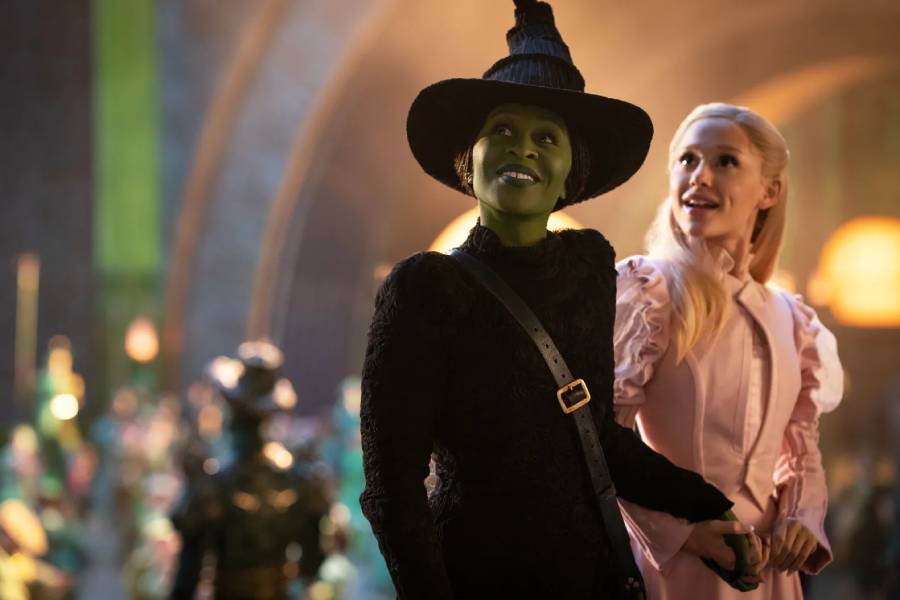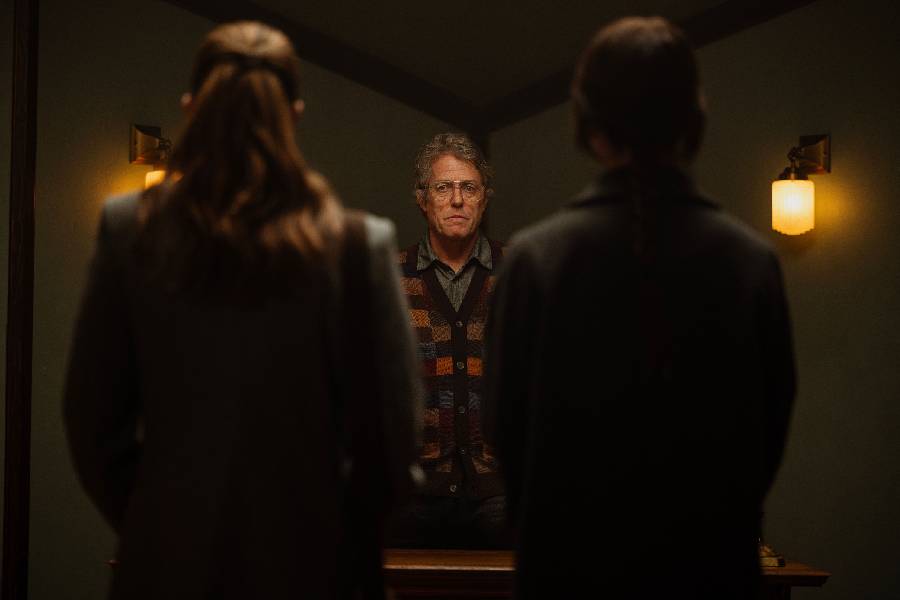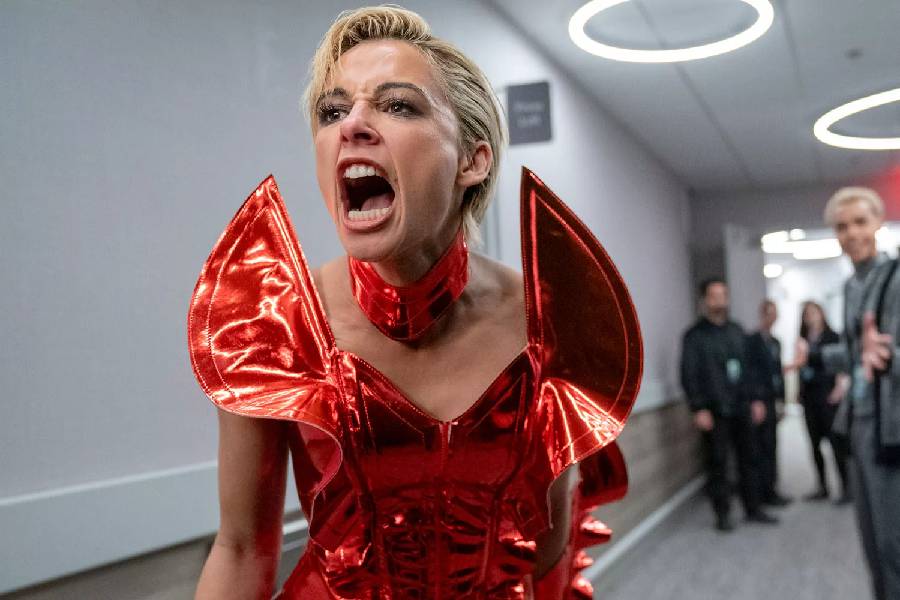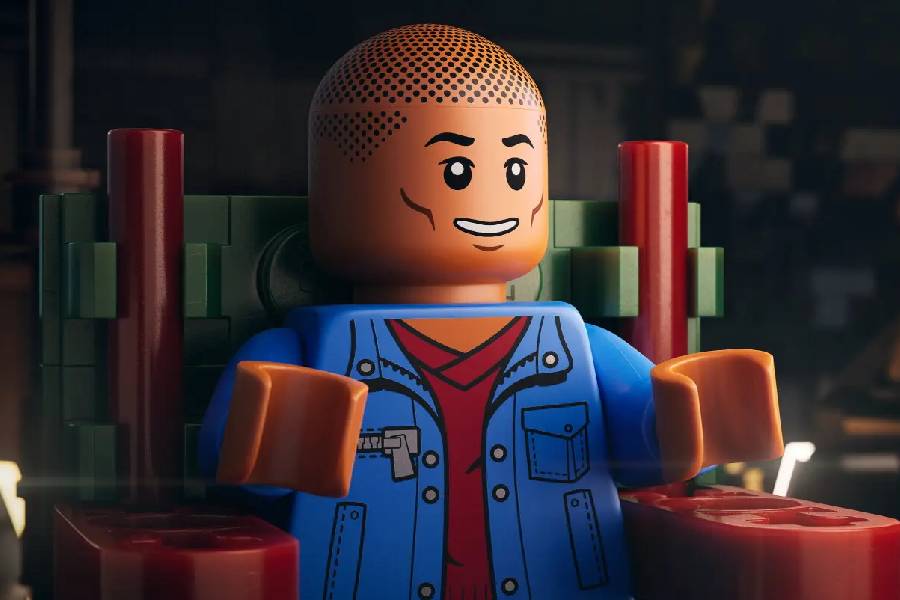3.0 out of 5.0 stars
“It’s What’s Inside” is the story of a reunion gone horribly wrong. On the eve of a wedding, friends gather at a family estate to celebrate and reconnect before the big day. Things are going great until the arrival of an eighth friend and his strange suitcase ruins their plans with a brutal game akin to “Mafia.” Despite many similarities to 2022’s “Bodies Bodies Bodies,” the film makes its own mark with sci-fi gimmicks and trickery.
The R-rated horror comedy — but mostly comedy — feature debut for writer-director Greg Jardin received wide acclaim at the Sundance Film Festival and was swiftly acquired by Netflix for $17 million. It was released Oct. 4 and became the seventh-ranked movie on the platform. Industry speculation suggests that Netflix might turn it into a franchise, particularly since it stars young actors playing a party game, so no big-name — and high-salary — stars are needed and filming can be confined primarily to one location.
The film opens with two of the friends, couple Shelby (Brittany O’Grady) and Cyrus (James Morosini), in the midst of a bitter fight as they struggle to maintain their spark and lack any clear direction for making it much further. Their college friend Reuben’s (Devon Terell) upcoming wedding brings their lack of forward momentum into focus, causing tension to seep into every interaction. Their argument sets the tone for their trip to Reuben’s country manor on a lushly forested estate.
The house itself is not a typical movie mansion. There are crystal rooms and numerous vaginal art installations created by Reuben’s deceased mother. Each room is a vibrant shade of purple, green or red, making the installations feel alive and emphasizing their connections with the movie’s underlying theme of rebirth.
Shelby and Cyrus’ circle of friends isn’t welcoming to outsiders, even Reuben’s bride-to-be. Each character is a different Gen Z caricature: the self-obsessed influencer, the artistic stoner, the careless partygoer and so on. That they all come from money is also obvious thanks to their carefree natures. The archetypes sometimes feel cartoonish but the snarky banter is thoroughly entertaining.
One factor looms over the celebration like a dark storm cloud ready to burst: their estranged friend, Forbes (David Thompson), whom they haven’t seen for eight years. Thompson plays him with just the right amount of eeriness to appear distrustful but with plenty of lovable, geeky innocence. Meanwhile, Forbes’ stomach-turning backstory is revealed through a rapid-fire montage of black-and-white photos appearing, disappearing and transforming. He brings the film’s MacGuffin — an object used to drive the plot forward — often in an unexpected direction. In this case, what’s inside Forbes’ strange suitcase — which he claims contains a game similar to Mafia, a role-playing party game — is the catalyst for turning this campy comedy into a twisty, body-swapping thriller.
Featuring cutthroat editing and offbeat cinematography, “It’s What’s Inside” skillfully balances escalating tension with breakneck pacing. With its surprising take on a body-swapping premise, individual consciences are easily swapped between brains like computer files transferred from one hard drive to another. It’s a distinctive idea that explores self-love and body image. Once the body-swapping begins, each actor must match the persona of their new conscience with some seeing themselves as reborn into these new bodies. Alycia Debnam-Carey especially shines in her role. Initially playing Nikki, the self-obsessed influencer, she later takes on the personality of others who react differently to her success. However, some characters are underused, causing some confusion across identity-swapping.
The horror elements are minimal. For a plot with so much potential to be a facetious gorefest, “It’s What’s Inside” lacks almost any blood. Jardin instead opts to poke fun at the genre, successfully skewering uncomfortable social situations with swift whip-smart dialogue rather than physical altercations between characters. There is not enough comedy to be hysterical or enough horror to be frightening. After a successful track record of directing promos and music videos, this film –– despite its flaws –– might firmly alter his career trajectory.
The ending of “It’s What’s Inside” comes out of nowhere, arriving more like a trick than a treat and leaving more questions than answers. It’s a style-over-substance movie, and sometimes — as in this film — it works. As long as they leave any sense of realism and believability behind, audiences will thoroughly enjoy this new addition to the Netflix queue.






